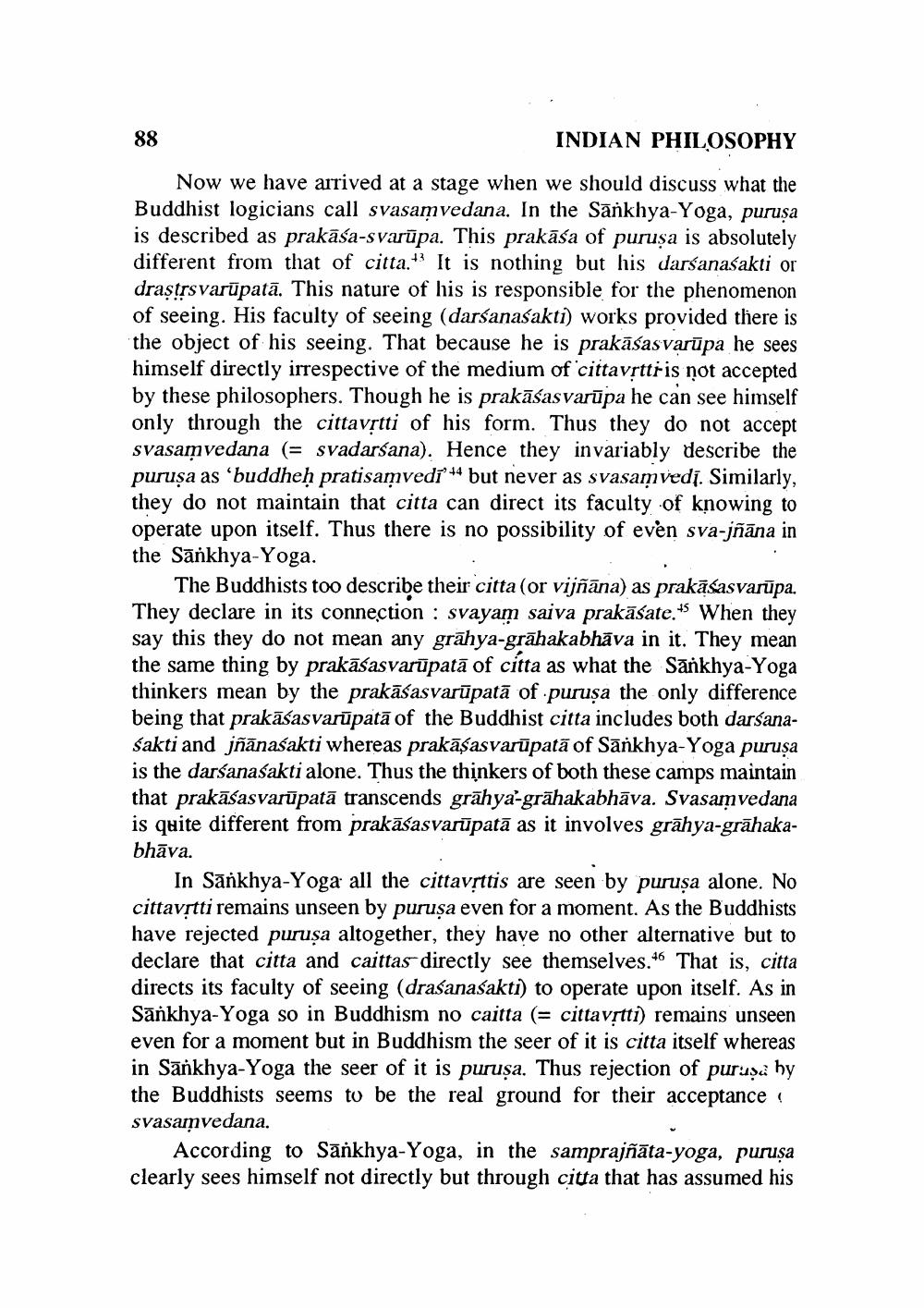________________
88
INDIAN PHILOSOPHY
Now we have arrived at a stage when we should discuss what the Buddhist logicians call svasamvedana. In the Sānkhya-Yoga, purusa is described as prakāśa-svarūpa. This prakāśa of puruşa is absolutely different from that of citta." It is nothing but his darśanasakti or drastrs varūpatā. This nature of his is responsible for the phenomenon of seeing. His faculty of seeing (darśanasakti) works provided there is the object of his seeing. That because he is prakāsas varūpa he sees himself directly irrespective of the medium of cittavrttris not accepted by these philosophers. Though he is prakāśas varūpa he can see himself only through the cittavrtti of his form. Thus they do not accept svasamvedana (= svadarśana). Hence they invariably describe the purusa as 'buddheḥ pratisamvedí +4 but never as svasamvedī. Similarly, they do not maintain that citta can direct its faculty of knowing to operate upon itself. Thus there is no possibility of even sva-jñāna in the Sāńkhya-Yoga.
The Buddhists too describe their citta (or vijñāna) as prakāśasvarūpa. They declare in its connection : svayam saiva prakāśate." When they say this they do not mean any grāhya-grāhakabhāva in it. They mean the same thing by prakāśasvarūpatā of citta as what the Sankhya-Yoga thinkers mean by the prakāśasvarūpatā of puruşa the only difference being that prakāśasvarūpatā of the Buddhist citta includes both darśanasakti and jñānasakti whereas prakāśasvarūpatā of Sankhya-Yoga purusa is the darśanasakti alone. Thus the thịnkers of both these camps maintain that prakāśasvarūpatā transcends grāhya-grāhakabhāva. Svasamvedana is quite different from prakāśasvarūpatā as it involves grāhya-grāhakabhāva.
In Sānkhya-Yoga all the cittavịttis are seen by puruşa alone. No cittavịtti remains unseen by puruṣa even for a moment. As the Buddhists have rejected purusa altogether, they have no other alternative but to declare that citta and caittas directly see themselves. 46 That is, citta directs its faculty of seeing (drasanasakti) to operate upon itself. As in Sānkhya-Yoga so in Buddhism no caitta (= cittavrtti) remains unseen even for a moment but in Buddhism the seer of it is citta itself whereas in Sankhya-Yoga the seer of it is purusa. Thus rejection of purusa hy the Buddhists seems to be the real ground for their acceptances svasamvedana.
According to Sankhya-Yoga, in the samprajñāta-yoga, puruşa clearly sees himself not directly but through citta that has assumed his




